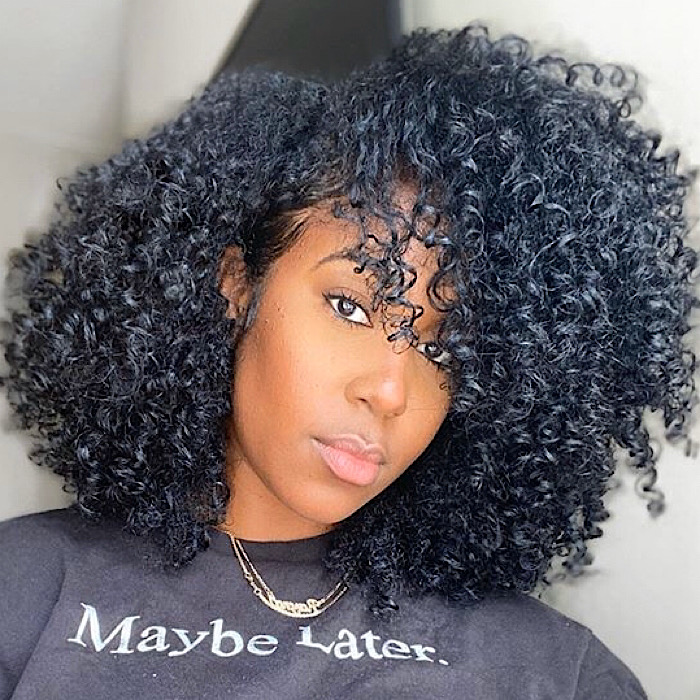What is multi-textured hair? It means having more than one texture/curl pattern on your head. Regardless of your texture, porosity, hair color, or length, we all have moments of hair defiance, especially when you have multi-textured hair. It’s the unpredictable kind of challenge that has you feeling at a loss with handling your hair’s split personality. So, how do you handle multiple textures on your head? With a little trial and error, and a little creativity, you will be able to work with what you’ve got and make the most of it.

Image Source:
First, we must all recognize that we cannot always change our hair. The most common reason for having multi-textured hair is genetics. If you’re desiring hair that is completely different from yours, you are sure to get frustrated. If you have multiple textures, it is normal and you’re not alone. Vitamin deficiencies or medication can cause a change in hair texture, but not always. However, if you notice a change in your texture along with either a change in diet or medication, then it might be a reason to check in with your doctor.
As a grown adult, genetics may not be the main factor to your hair variability anymore, but other things like a recent move to another location could be the cause of your texture change, along with the weather and humidity, or maybe your hair has gone through a chemical process, like permanent color or bleach. When you color your hair, the chemical process may alter the curl pattern, making your curls looser. In most cases this change is temporary, however, sometimes the changes are permanent.
If you’ve recently transitioned from damaged hair, the hair on the front of your head may take longer to recover and heal. With that being said, the front hairs of your head can be a lot looser. Don’t treat the front of your hair like you would the rest. For example, when using a gel, use more of it in the straighter /looser area, as it may need a stronger styling product to help hold your looser curl pattern.
If you have tightly coiled hair, try using heavier products to help loosen the texture and prevent a lot of shrinkage. Here is something that has worked for my tighter curls at the root area; after applying hair products, use a blow dryer with a diffuser to speed up the drying time in that area. Hold the ends of your hair taut and stretch it with your hands then concentrate the diffuser at the roots. This technique will help elongate the hair at the root, making your hair appear longer. Check out this video for a tutorial.
Tips & Tricks: If you want a more even curl pattern, you can blend the textures by using strategic styling with specific hair products.
Here are some styles to try:
- Banding
- Bantu knots
- Finger coils
- Parting your hair on its ‘best side’ is an easy solution for uneven/multiple textures
- Twists/Braid outs
Check-in with your hairstylist :
If you’re bothered by the way your hair doesn’t respond to anything you’ve tried, pay your hairstylist a visit. Perhaps, a custom cut or adding layers will do the trick.
Helpful tools:
You can merge your hair’s fickle curls by using a Denman brush. If used properly, it’ll create a smooth, more even curl pattern in areas that lack definition. Here are some other tools to try:
- Curlformers
- Flexi rods
- Foam rollers
- Perm rods
Here are some product suggestions to use with the hairstyles and tools:
- TRUE by made beautiful Moisturizing Styling Foam
- Giovanni Cosmetics Mousse Air-Turbo Charged™ Hair Styling Foam
- Mielle Organics Brazilian Curly Cocktail Curl Mousse
- CURLS Whipped Cream
- Curls Dynasty Vanilla Cream Custard Curl Defining Cream
- Curls Dynasty Twisted Definition Twisting Cream
- CURLS Blueberry Bliss Twist-N-Shout Cream
Have some tips of your own to share? Drop them in the comments!
